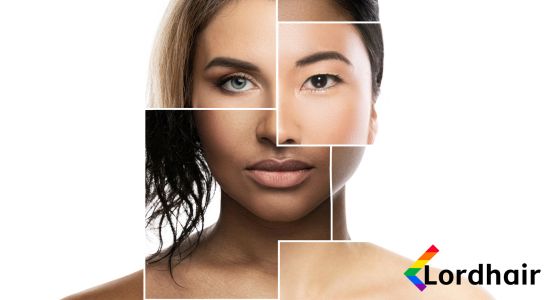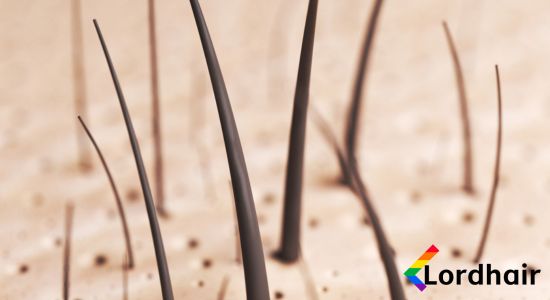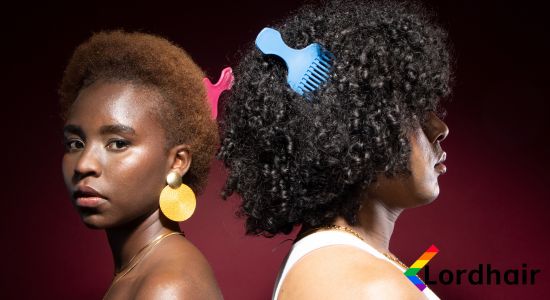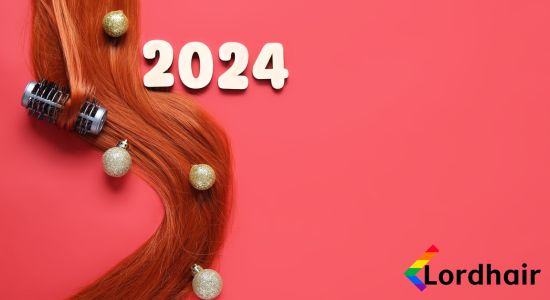What Are the Differences Between Male and Female Hair Growth?
- Written by Ray Fernandez
- Dec 13, 2023
- |
- 7 min read
 Listen to the full text
Listen to the full text
There is no denying the remarkable diversity when it comes to human hair. From different hair colours and textures to varying lengths and styles, our hair is as unique as our fingerprints. This diversity in hair growth is evident not only between individuals but also between genders. In this blog, Lordhair - a globally trusted brand for hair toupees - will delve into the fascinating world of hair diversity and explore the key differences between male and female hair growth. I acknowledge that there are many different genders. For this particular blog, however, I will focus on the differences between men and women.

Is Hair Growth Faster for Men or Women?
When it comes to hair diversity, one of the primary factors influencing the differences between male and female hair growth is hormones. Both sexes produce androgen hormones, but the levels and patterns of hormone production differ greatly between males and females. These hormones play a significant role in determining the characteristic differences in hair growth.
Typically, males have higher levels of androgens, such as testosterone, which affect hair growth. The presence of these androgens in males causes the hair follicles to switch from the growth phase (anagen) to the resting phase (telogen) at a slower rate. As a result, men tend to have longer hair growth cycles, allowing their hair to grow longer before entering the shedding phase. This is why we commonly see men with longer hair compared to women. When I was a child, the barbershop seemed more like my second home than it did for most of my female classmates.
On the other hand, females have higher levels of estrogen, which counteracts the effects of androgens. Estrogen can increase the duration of the anagen phase in hair follicles, leading to longer hair growth cycles for women. This can contribute to women generally having faster hair growth compared to men. Additionally, higher estrogen levels in females may also influence hair thickness and density, making female hair appear fuller and more voluminous.
One factor that becomes apparent when considering non surgical hair replacement systems is the likelihood of human hair being donated by a female. This is due to the differences in hair growth between males and females, as discussed earlier. With females generally having faster hair growth cycles and often possessing longer hair lengths, their hair becomes a valuable resource for those seeking hair replacement solutions. The availability and suitability of female-donated hair make it a preferred choice in most, if not all, hair replacement systems.
My thoughts on the double standards of hair loss: men vs women

What Other Genetic Factors Are Involved?
Apart from hormonal differences, hair growth patterns in men and women also differ due to genetic factors. Genes play a crucial role in determining the density, colour, texture, and pattern of hair growth. These genetic variations are responsible for the vast diversity in human hair.
For instance, men commonly experience male pattern baldness, which is a genetic condition characterised by the progressive loss of hair from the scalp. This condition is believed to be influenced by a combination of genetic factors and androgen hormones. Female pattern hair loss, on the other hand, is generally different from male pattern baldness and has its own distinct pattern of hair loss with less overall hair thinning.
The growth of hair is primarily determined by genetic factors and hormonal influences, rather than the colour of an individual's skin. Hair growth patterns and characteristics are mainly determined by the presence or absence of certain genes, which vary among individuals regardless of their skin colour. While hair colour itself is not directly linked to the growth rate or pattern, it is often associated with certain genetic traits that may influence hair characteristics. For example, individuals with lighter skin tones typically have a higher prevalence of fair or blonde hair, while those with darker skin tones often have a greater occurrence of dark or black hair. However, these variations in hair colour do not directly dictate the growth rate or pattern of the hair itself. Instead, factors such as genetic predisposition, hormonal fluctuations, and overall health play more significant roles in determining hair growth.

Are There Any Other Factors Involved?
Apart from hormonal and genetic factors, hair growth can also be influenced by environmental factors and care practices. Factors such as diet, stress, medication, and exposure to pollutants can have an impact on the health and growth of hair in both males and females. Additionally, hair care practices such as washing frequency, use of hairstyling products, heat styling tools, and chemical treatments can also affect hair growth.
Differences Between Male and Female Hair Growth: Final Thoughts
Hair growth is indeed influenced by hormonal and genetic factors, leading to significant differences between males and females. These differences can affect the appearance and texture of hair, as well as its growth patterns. Hormones, particularly androgens, play a crucial role in shaping hair growth cycles in males. Androgens, such as testosterone, are responsible for stimulating hair growth in certain areas of the body, like the face and chest, while also regulating the growth of scalp hair. Females experience faster hair growth cycles influenced by estrogen. Genetic variations and environmental factors further contribute to the diverse range of hair growth patterns in both sexes.
Understanding these differences enables us to appreciate the remarkable diversity in human hair growth and tailor our hair care routines accordingly.
So, embrace your unique hair and celebrate the diversity that makes us all beautifully different.
Ray is a guest contributor to our blogs with an extensive background in PR. Ray loves to discuss his own hair systems (also commonly known as men’s human hair wigs, hair toupees, hair units, and men’s hairpieces) journey by offering insights into wearing and styling a toupee wig as well as providing observations on the role of hair in sexual and gender identity from an LGBTQ+ perspective. Be sure to check out more of Ray’s Diversity content.


